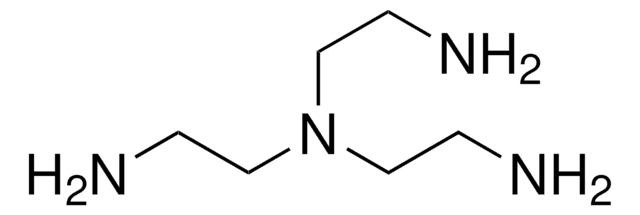Wichtige Dokumente
85610
Spermin -tetrahydrochlorid
≥99.0% (AT), powder or crystals
Synonym(e):
N,N′-Bis-(3-aminopropyl)-1,4-butandiamin -tetrahydrochlorid
About This Item
Empfohlene Produkte
Biologische Quelle
microbial
synthetic
Qualitätsniveau
Assay
≥99.0% (AT)
Form
powder or crystals
mp (Schmelzpunkt)
310-311 °C (dec.) (lit.)
Löslichkeit
H2O: 0.1 g/mL, clear
Lagertemp.
room temp
SMILES String
Cl.Cl.Cl.Cl.NCCCNCCCCNCCCN
InChI
1S/C10H26N4.4ClH/c11-5-3-9-13-7-1-2-8-14-10-4-6-12;;;;/h13-14H,1-12H2;4*1H
InChIKey
XLDKUDAXZWHPFH-UHFFFAOYSA-N
Suchen Sie nach ähnlichen Produkten? Aufrufen Leitfaden zum Produktvergleich
Anwendung
Biochem./physiol. Wirkung
Signalwort
Warning
H-Sätze
Gefahreneinstufungen
Eye Irrit. 2 - Skin Irrit. 2
Lagerklassenschlüssel
11 - Combustible Solids
WGK
WGK 3
Flammpunkt (°F)
Not applicable
Flammpunkt (°C)
Not applicable
Persönliche Schutzausrüstung
dust mask type N95 (US), Eyeshields, Gloves
Analysenzertifikate (COA)
Suchen Sie nach Analysenzertifikate (COA), indem Sie die Lot-/Chargennummer des Produkts eingeben. Lot- und Chargennummern sind auf dem Produktetikett hinter den Wörtern ‘Lot’ oder ‘Batch’ (Lot oder Charge) zu finden.
Besitzen Sie dieses Produkt bereits?
In der Dokumentenbibliothek finden Sie die Dokumentation zu den Produkten, die Sie kürzlich erworben haben.
Kunden haben sich ebenfalls angesehen
Unser Team von Wissenschaftlern verfügt über Erfahrung in allen Forschungsbereichen einschließlich Life Science, Materialwissenschaften, chemischer Synthese, Chromatographie, Analytik und vielen mehr..
Setzen Sie sich mit dem technischen Dienst in Verbindung.






